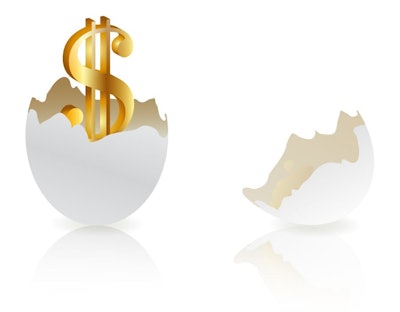
Proposition 12 requires that all eggs sold in California starting January 1, 2022, must be from cage-free hens. According to the U.S. Census Bureau, California has a population of approximately 39.5 million people. The December 2020 USDA WASDE report estimates U.S. per capita consumption of eggs at 285.7 in 2020. Prior to the COVID-19 pandemic, roughly two-thirds of egg consumption came in the form of shell eggs. Let’s assume that by January 1, 2022, the pandemic is over and U.S. egg sales return to their past levels. This would mean cage-free shell egg needs in California would be around 7.5 billion eggs.
How many more cage-free birds are needed?
IRI retail scanner data, for the 52-week period ending December 27, 2020, show that California consumers spent a total of $874.1 million on retail shell eggs. Retail non-organic cage-free egg sales in California totaled $153.6 million in the same time frame, or 17.6% of the total on a dollar-spent basis.
The total number of cage-free eggs being sold in California is from a combination of hens housed in organic, pasture-raised and cage-free programs. All cage-free egg types have significantly higher retail prices than eggs from cage-housed hens. Let’s assume that, in terms of number of eggs, the current total of all cage-free egg types sold in California is equal to 20% of total retail shell egg sales. This means California consumers will need 6 billion more cage-free shell eggs on retail shelves in 2022 than in 2020. At 270 eggs per hen, that equates to needing a little over 22 million more cage-free hens for shell egg needs. Prop 12 implementation will have a similar impact as Prop 2 did; expect extreme egg price volatility in California in 2022.


















